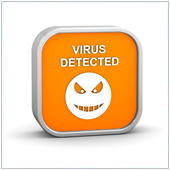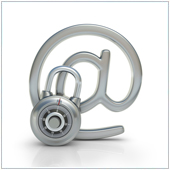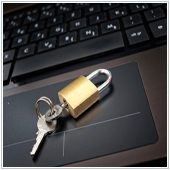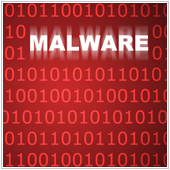 Macs, long touted by Apple to be the safest and most secure computers available have been coming under increasing attack lately, with a growing number of Mac specific malware infecting systems. This has caught many users off guard and they have been scrambling to ensure their systems are secure. There is a new threat that could cause trouble for Mac users.
Macs, long touted by Apple to be the safest and most secure computers available have been coming under increasing attack lately, with a growing number of Mac specific malware infecting systems. This has caught many users off guard and they have been scrambling to ensure their systems are secure. There is a new threat that could cause trouble for Mac users.
Dubbed OSX/Crisis, this malware has just been discovered, and it’s an interesting one.
OSX/Crisis silently infects Mac users regardless of their status. If a user visits a website it is hosted on, or downloads an attachment with the malware attached, it will install itself without letting the user know.
As Mac users know, there are two types of users: Admin and non-admin. Admin users have rights to install and delete files, while non-admin don’t. Typically, if a user install something they have to enter an admin password to complete the install. OSX/Crisis doesn’t ask for this permission, meaning the user won’t even know they’ve been infected.
When the trojan is installed, it opens a backdoor to your computer, so a hacker can quickly and easily enter your computer without you noticing, or having to log in. The disturbing thing about OSX/Crisis is it installs different files depending on the user’s access privileges, giving hackers access to the computer regardless of authority of the user.
Intego.com, the company that found the malware has noted that there have been no cases of this malware in users. While it isn’t out there yet, chances are highly likely that it will be soon. The company also noted that it only works on OSX versions 10.6 and 10.7, earlier versions and the new version, 10.8 won’t allow it to install itself.
If you use Macs in your office, you should take precautionary steps by installing virus scanners, ensuring they’re up-to-date and conducting scans on a scheduled basis. To learn more about this threat and other security issues, please contact us.

 There’s a scene in Spaceballs, a movie by Mel Brooks, where the evil Spaceballs are trying to steal air from the planet Druidia. To do so, they force the king of Druidia to give up the password - 1,2,3,4,5 - to the airlock. After you hear the password, one character exclaims, “That’s the stupidest combination i’ve heard in my life.” While it may be stupid and you’ll probably never hear someone admit their password is 12345, recent account leaks from a number of websites have proven we still use passwords that are easy to guess when they shouldn’t be.
There’s a scene in Spaceballs, a movie by Mel Brooks, where the evil Spaceballs are trying to steal air from the planet Druidia. To do so, they force the king of Druidia to give up the password - 1,2,3,4,5 - to the airlock. After you hear the password, one character exclaims, “That’s the stupidest combination i’ve heard in my life.” While it may be stupid and you’ll probably never hear someone admit their password is 12345, recent account leaks from a number of websites have proven we still use passwords that are easy to guess when they shouldn’t be. The cloud and all related services are making large inroads into businesses around the globe, with many utilizing at least one form of cloud. One of the most popular categories of cloud in use is cloud storage. Until recently cloud storage has been relatively secure, but, a major cloud storage provider has recently had an incident where account information was stolen.
The cloud and all related services are making large inroads into businesses around the globe, with many utilizing at least one form of cloud. One of the most popular categories of cloud in use is cloud storage. Until recently cloud storage has been relatively secure, but, a major cloud storage provider has recently had an incident where account information was stolen. The Internet is one big massive information tool, we can find anything we want by clicking a mouse and hitting a few keys on the keyboard. Some information - passwords, addresses, etc.- we would like to keep secret from other users. We trust websites to keep this information safe and 99% of the time, our information is safe, however, there’s a chance your info could be breached. This has recently happened to two major websites.
The Internet is one big massive information tool, we can find anything we want by clicking a mouse and hitting a few keys on the keyboard. Some information - passwords, addresses, etc.- we would like to keep secret from other users. We trust websites to keep this information safe and 99% of the time, our information is safe, however, there’s a chance your info could be breached. This has recently happened to two major websites. Malware is an ever present threat that PC, and to a lesser extent Mac, users have to live with. There is a high chance that your computer will at one time come under attack, or you will inadvertently install a piece of malware. There’s a new scheme you should be aware of involving Facebook photo notification emails.
Malware is an ever present threat that PC, and to a lesser extent Mac, users have to live with. There is a high chance that your computer will at one time come under attack, or you will inadvertently install a piece of malware. There’s a new scheme you should be aware of involving Facebook photo notification emails. At E3 (an annual technology conference) this year, a new video game was showcased. Watch Dogs, set in the near future, is a game about an elite hacker who can hack into any device as long as it has a Wi-Fi connection. In the short demo, you see the character listen in on private conversations, hack streetlights to create havoc and steal a person’s information. While this is only a video game, it’s based on what one can currently do with and to Wi-Fi devices, many of which you probably utilize when you’re out of the office.
At E3 (an annual technology conference) this year, a new video game was showcased. Watch Dogs, set in the near future, is a game about an elite hacker who can hack into any device as long as it has a Wi-Fi connection. In the short demo, you see the character listen in on private conversations, hack streetlights to create havoc and steal a person’s information. While this is only a video game, it’s based on what one can currently do with and to Wi-Fi devices, many of which you probably utilize when you’re out of the office. The recent LinkedIn password breach and the various Mac and Windows Trojan horses have many small business managers wondering if their data is actually safe. Even if you take steps to ensure safety, they may not be enough and your data may still be at risk. One method companies could implement is two factor authentication.
The recent LinkedIn password breach and the various Mac and Windows Trojan horses have many small business managers wondering if their data is actually safe. Even if you take steps to ensure safety, they may not be enough and your data may still be at risk. One method companies could implement is two factor authentication. Business owners often have multiple accounts with many different websites and Web services. There’s one element that links them all together, no matter their purpose: the password. A password is an owner’s sacred key that’s trusted to very few people. You expect that when you share your password with a website, it’s secure. This isn’t always the case and some of LinkedIn’s users’ passwords have recently leaked.
Business owners often have multiple accounts with many different websites and Web services. There’s one element that links them all together, no matter their purpose: the password. A password is an owner’s sacred key that’s trusted to very few people. You expect that when you share your password with a website, it’s secure. This isn’t always the case and some of LinkedIn’s users’ passwords have recently leaked.  The security of a network and the systems within it is top of mind for many IT professionals and business owners. As such, many small business owners are implementing security measures to ensure their system stays secure. There’s a new malware program that could threaten the security of your system, regardless of which OS you use.
The security of a network and the systems within it is top of mind for many IT professionals and business owners. As such, many small business owners are implementing security measures to ensure their system stays secure. There’s a new malware program that could threaten the security of your system, regardless of which OS you use. The Internet has become one of the most important tools in our personal and professional lives. It’s hard to imagine what life would be like without it. There’s a chance that may happen for users who’ve been infected by the DNSChanger Trojan. This nasty Trojan has infected many computers around the world and has forced the FBI to take drastic action.
The Internet has become one of the most important tools in our personal and professional lives. It’s hard to imagine what life would be like without it. There’s a chance that may happen for users who’ve been infected by the DNSChanger Trojan. This nasty Trojan has infected many computers around the world and has forced the FBI to take drastic action. 
